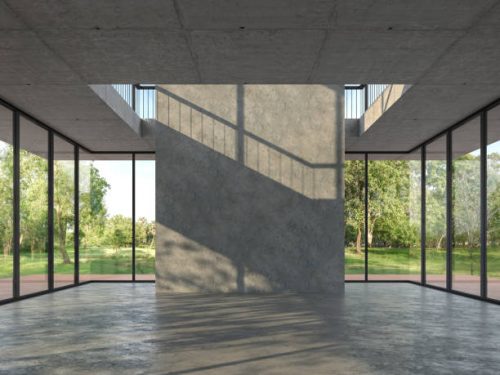Concrete and sustainability are two words that are frequently thought to be incompatible. Concrete is the most commonly used manufactured material on the planet. It has inherent advantages such as resistance, versatility, cost-effectiveness, and accessibility. Concrete construction is popular use in buildings and infrastructure forms the foundations of cities and connects communities. It will continue to play a vital role in providing solutions to the challenges of the future, especially as cities must respond to a growing global population. With cement as a key ingredient, it also has several environmental costs, accounting for at least 8% of global carbon emissions in a climate-change context.

Concrete construction’s Potential in Sustainable Architecture
The demand for low-carbon materials in the construction industry is increasing exponentially as architecture continues to shift toward environmental sustainability. The concrete industry is no different. While improvements in manufacturing processes have reduced the material’s lifetime carbon footprint significantly, there is still a long way to go before reaching optimal levels.
Building with a carbon-absorbing type of concrete, carbon sequestration processes, and energy-efficient structures. If it’s combined with integral insulation are some ways to create more eco-friendly concrete structures.
Concrete is reusable, which means that even after a project has been demolished, fragments can be used for pavement, landscaping mulch, oceanic reef inhabitants, or even to replace aggregates in concrete mixtures.
More durability with less cement
There are several methods for reducing the cement in concrete mixes – and thus lowering its lifetime carbon footprint.
Whether it’s by using larger, well-graded aggregates that leave fewer voids for the paste to fill, or by using high-strength concrete that allows workers to build elements with thinner sections. Furthermore, hardening or water-reducing admixtures can keep a concrete mix strong even after reducing its cement content, allowing for the most efficient use of the remaining cement.
In the direction of a more sustainable concrete construction environment
There are clearly many misconceptions about concrete, particularly regarding sustainability. Even though traditional uses of the material have had a significant negative impact on the environment, many technological advances and innovative products have the potential to put this notion to rest.
Whether through crystalline technologies, durability-enhancing methods, real-time monitoring sensors, or a variety of other intelligent solutions. Concrete construction is undeniably beneficial to sustainable architecture. This will only be possible if we continue to harness and leverage innovative products that will be critical to unlocking the sector’s environmentally friendly future.